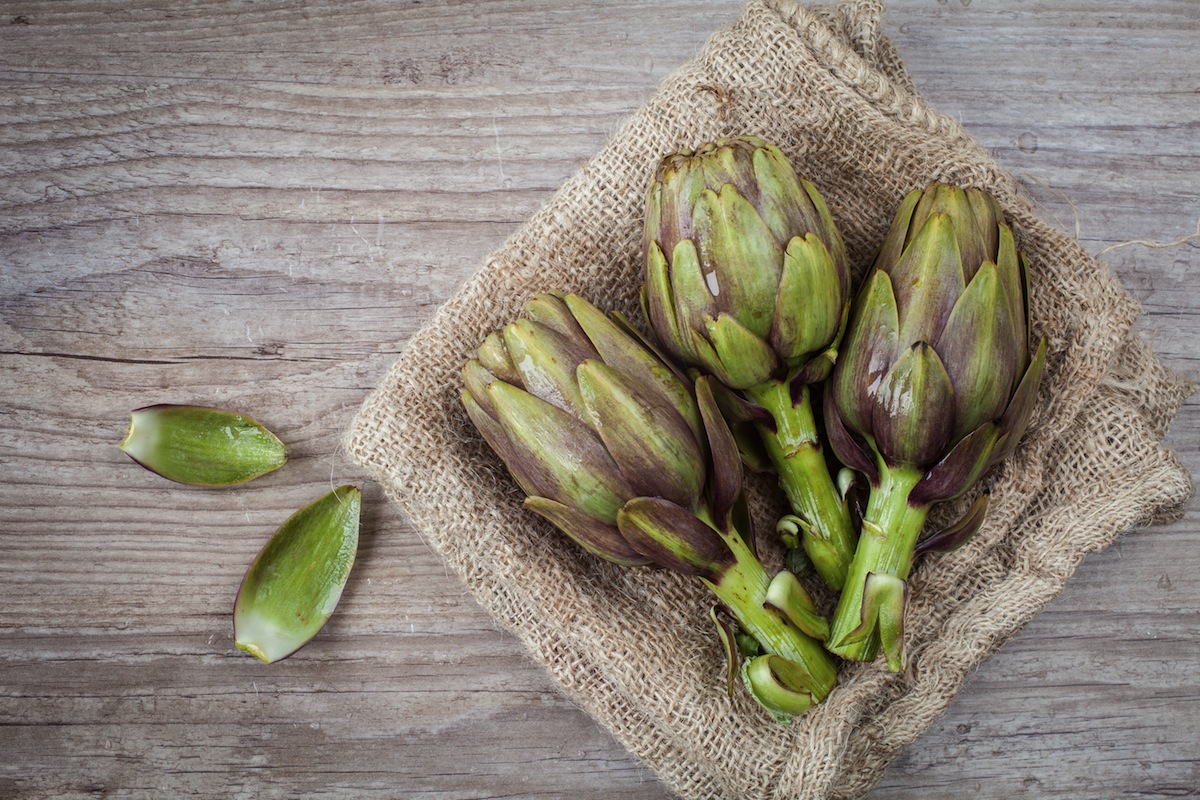The Local newsletter is your free, daily guide to life in Colorado. For locals, by locals.
I’m a fan of Tara Duggan’s Root to Stalk cookbook, but the honest truth is most days it’s all I can do to get a homemade meal on the table, let alone worry about making use of the carrot tops or potato peels I’ve accumulated in the process. Often, I’m happy to toss such kitchen scraps into the compost pile knowing they’ll have a second life in our garden. But one vegetable always gets me: the artichoke. I have a hard time pitching any of this spring vegetable in part because trimming the thistle seems to produce as much waste as it does edible value, and because artichoke has been one of my favorite flavors since childhood.
Instead, I often reserve any cooking liquid that’s leftover from steaming or par-boiling roasted artichokes. In it, I simmer my trimmings, creating a concentrated stock that I then use (fresh or frozen) to feed an artichoke risotto. Recently, however, I found myself craving a little more inspiration, and so I asked several area chefs what they do with the leftover leaves, stems, and chokes of this peculiar vegetable.

At home and for family meal at his Beast & Bottle restaurant, Paul Reilly uses the extra long stems of artichokes to make a sauce for angel hair pasta. “When artichoke stems are really large they will often break off from the globe,” says the chef-owner, who cooks them separately in white wine, water, olive oil, and lemon; drains them; and then purées the cooked stems with garlic and parsley. “You can thin out the sauce with olive oil, if needed,” Reilly advises.
For her artichoke tortelloni entrée, an original and permanent menu item at Rioja, chef-owner Jennifer Jasinski uses every last bit of the vegetable. Stems and hearts are used to make a creamy mousse with cheese from Haystack Mountain Goat Dairy. Still more hearts are braised, and the Wolfgang Puck-disciple turns some of the leaves into crisp chips. Finally, leaf trimmings flavor a broth in which all of these other components sit.
Blake Edmunds, who is currently the chef at Caveau Wine Bar, reports that he and chef Max MacKissock used to make a similar broth at the Squeaky Bean. The pair would sweat trimmings with olive oil; add a mixture of cream, milk, and herbs such as bay leaf, rosemary, and thyme; and let the combination steep over a low simmer until it sweetened. After straining the leaves and herbs, Edmunds would salt the sauce to taste, then froth it. He and MacKissock used it as a light soup base for an artichoke dish, but it would also be delicious poured around a piece of spring halibut at home.
In Ballpark, Jeff Osaka, the chef-owner of Twelve and the forthcoming Osaka Ramen dehydrates artichoke parts to make tea. First, he chops every part of the vegetable into pieces and soaks them in acidulated water for a few minutes to prevent oxidation. He dries them overnight in a low oven, then pulses the dehydrated pieces in a food processor. “You can then steep the dried artichoke in hot water like an herbal tea,” the chef says. “I like to add fennel fronds for that anise flavor.”
Osaka isn’t the only one making artichoke tea: Across town at Session Kitchen, chef Scott Parker just added a dish that features a similar brew. All spring, Parker will serve fried baby artichokes with an artichoke tea aioli—which includes a syrup of artichoke trimmings, sugar, vinegar, and water—for dipping.
Boulder’s Eric Skokan grows his own artichokes, a challenging feat on the Front Range. He has to “trick” the biennial that can’t survive a Colorado winter into thinking it has hit its second season. It’s no surprise the Black Cat chef-owner is determined to use every last scrap of such a precious crop. Together with “bar czar” Griffin Farro, Skokan uses the peelings to make Cynar-like bar bitters. “When it tastes like chewing on aspirin, it’s ready,” the chef says of the initial step before adding burned sugar, herbs, and spices to the cocktail flavoring agent.
Asprin? No wonder another chef-farmer, Alex Seidel, takes a different approach. “Feed the trimmings to the pigs,” the owner of Fruition Farms and six hogs quips.
Follow Stacey Brugeman on Facebook, Instagram, and Twitter @denveromnivore.
—Image courtesy of Shutterstock








